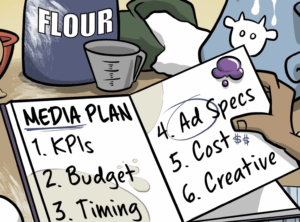 “The Sell Sider” is a column written by the sell side of the digital media community.
“The Sell Sider” is a column written by the sell side of the digital media community.
Today’s column is written by Manny Puentes, chief technology officer at Altitude Digital.
Google recently announced that its popular Chrome browser, at nearly half of the worldwide browser market, will soon “intelligently pause” any Flash content not central to the page. While this update is intended to be a battery saver for laptops, publishers are rightfully concerned about the impact it will have on their video revenue streams.
A lot of speculation and conjecture has loomed around this change. A common misunderstanding is that Chrome will block Flash all together. Based on information shared on the official Google Chrome blog, this isn’t true – the browser will be “keeping central content (like a video) playing without interruption.” The change is meant to primarily pause animations nonessential to the page; in terms of video advertising inventory, this primarily will affect in-banner video that autoplays on the page load.
The potential negative impact on revenue is hard to quantify, and will vary based on the publisher’s video strategy. Those running in-banner autoplay ads will be most affected, but all publishers can implement strategies to proactively reduce the impact on their revenue streams in both the short term and long term.
Understand The Flash-To-HTML5 Transition
HTML5 is the future of video ad delivery, especially as the technology will be the primary delivery method on mobile devices. However, the majority of the buy side is still in the process of moving from Flash-based creative to HTML5-compliant creative, so the industry must treat this as a transition period.
Publishers need to seek and test player solutions that support HTML5 as the primary way to display video content and related advertising, but still support Flash as a fallback.
Focus On Large And Medium Player Inventory
In the shorter term, while evaluating different HTML5 solutions, publishers can still maintain their video revenue streams by focusing efforts around large and medium player inventory.
Based on early observations with the beta version of this Chrome release, expected to roll out this fall, this change is most likely to affect video smaller than 400 pixels in width. Larger video inventory, within a normal aspect ratio, should play as expected when a page loads.
AdExchanger Daily
Get our editors’ roundup delivered to your inbox every weekday.
Daily Roundup
Implement In-Content Players
Google was clear that this change is not meant to impact video players essential to the page. While there has been a focus on implementing outstream video players as an effort to scale video inventory, publishers shouldn’t lose sight of their in-content, in-stream players. Not only is this inventory particularly valuable to advertisers, these type of video players are likely to be treated as “essential to the page” and should run uninterrupted when Chrome pushes this feature change.
This change is no doubt pushing the industry in the right direction. HTML5 will be an essential part of the growth of mobile and video, but publishers shouldn’t feel pressured to pick the first HTML5 solution that comes along. By taking a holistic approach toward their video inventory and focusing on solutions that provide the best experience for users (Flash or no Flash), publishers will maximize the value of their web pages.
Follow Manny Puentes (@epuentes), Altitude Digital (@AltitudeDP) and AdExchanger (@adexchanger) on Twitter.












